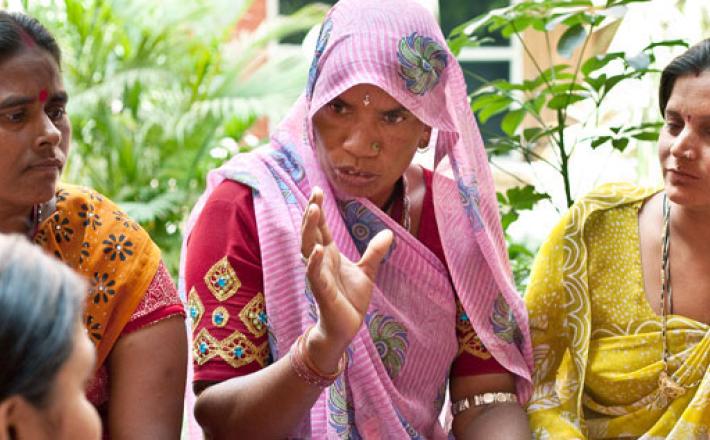Women in Power and Decision-making
Women are often dynamic leaders of change, galvanizing women and men to get involved, claim their rights, strengthen their communities and protect their planet. Their participation is fundamental to democratic governance. Yet women still have far to go towards equal representation in positions of power and leadership, whether in corporate boardrooms or presidential cabinets.
Discriminatory laws and practices hold women back, as do limits on education, income and time away from caregiving. Just over 21 per cent of parliamentarians are women, up from around 11 per cent when the Beijing Fourth World Conference on Women took place in 1995. While women have made inroads in many areas, at the current pace of change, we won’t see gender parity in governments, parliaments or peace tables until the next century.
The Beijing conference agreement, known as the Platform for Action, dubbed women in power and decision-making one of 12 critical areas of concern. It made two essential commitments to change. First, it called for measures ensuring women’s equal access to and full participation in power structures and decision-making. Political quotas or positive measures are examples of these. By reserving seats or candidacies for women, they have driven dramatic increases in the number of women leaders in some countries. Second, the Platform urged steps to increase women’s ability to participate. Training on leadership, public speaking and political campaigning, for instance, grooms women to compete, win and be good leaders who can inspire others.
Women have a right to equal participation. Once in leadership roles, they can make a difference that benefits whole societies. The Inter-Parliamentary Union has found that women politicians give more attention to social welfare and legal protections, and improve trust. Taking up the Beijing commitments and rallying around women’s leadership could accelerate progress towards equal participation—right now. We can’t wait until the next century!

Women are often dynamic leaders of change, galvanizing women and men to get involved, claim their rights, strengthen their communities and protect their planet. Their participation is fundamental to democratic governance. Yet women still have far to go towards equal representation in positions of power and leadership, whether in corporate boardrooms or presidential cabinets.
Discriminatory laws and practices hold women back, as do limits on education, income and time away from caregiving. Just over 21 per cent of parliamentarians are women, up from around 11 per cent when the Beijing Fourth World Conference on Women took place in 1995. While women have made inroads in many areas, at the current pace of change, we won’t see gender parity in governments, parliaments or peace tables until the next century.
The Beijing conference agreement, known as the Platform for Action, dubbed women in power and decision-making one of 12 critical areas of concern. It made two essential commitments to change. First, it called for measures ensuring women’s equal access to and full participation in power structures and decision-making. Political quotas or positive measures are examples of these. By reserving seats or candidacies for women, they have driven dramatic increases in the number of women leaders in some countries. Second, the Platform urged steps to increase women’s ability to participate. Training on leadership, public speaking and political campaigning, for instance, grooms women to compete, win and be good leaders who can inspire others.
Women have a right to equal participation. Once in leadership roles, they can make a difference that benefits whole societies. The Inter-Parliamentary Union has found that women politicians give more attention to social welfare and legal protections, and improve trust. Taking up the Beijing commitments and rallying around women’s leadership could accelerate progress towards equal participation—right now. We can’t wait until the next century!